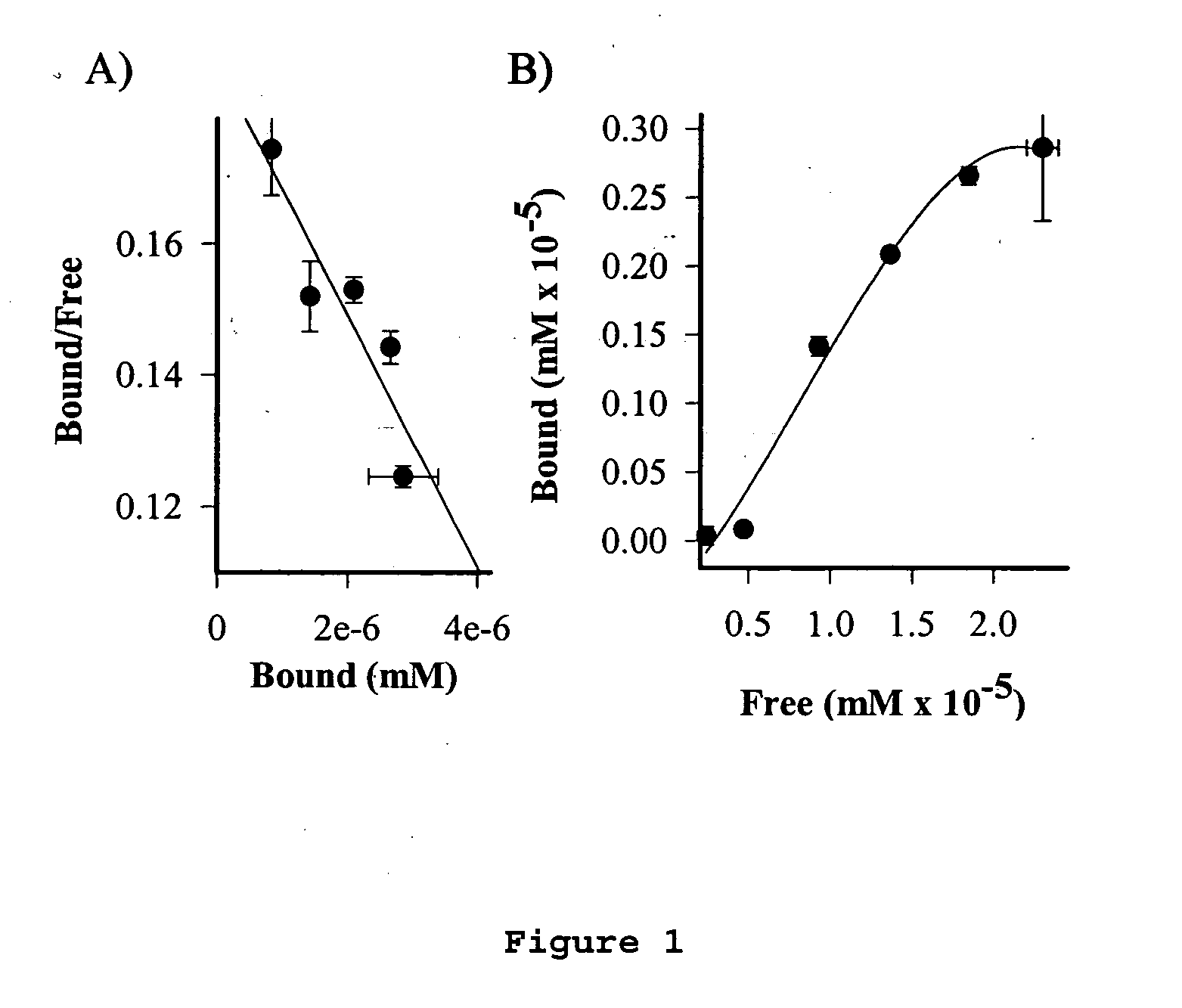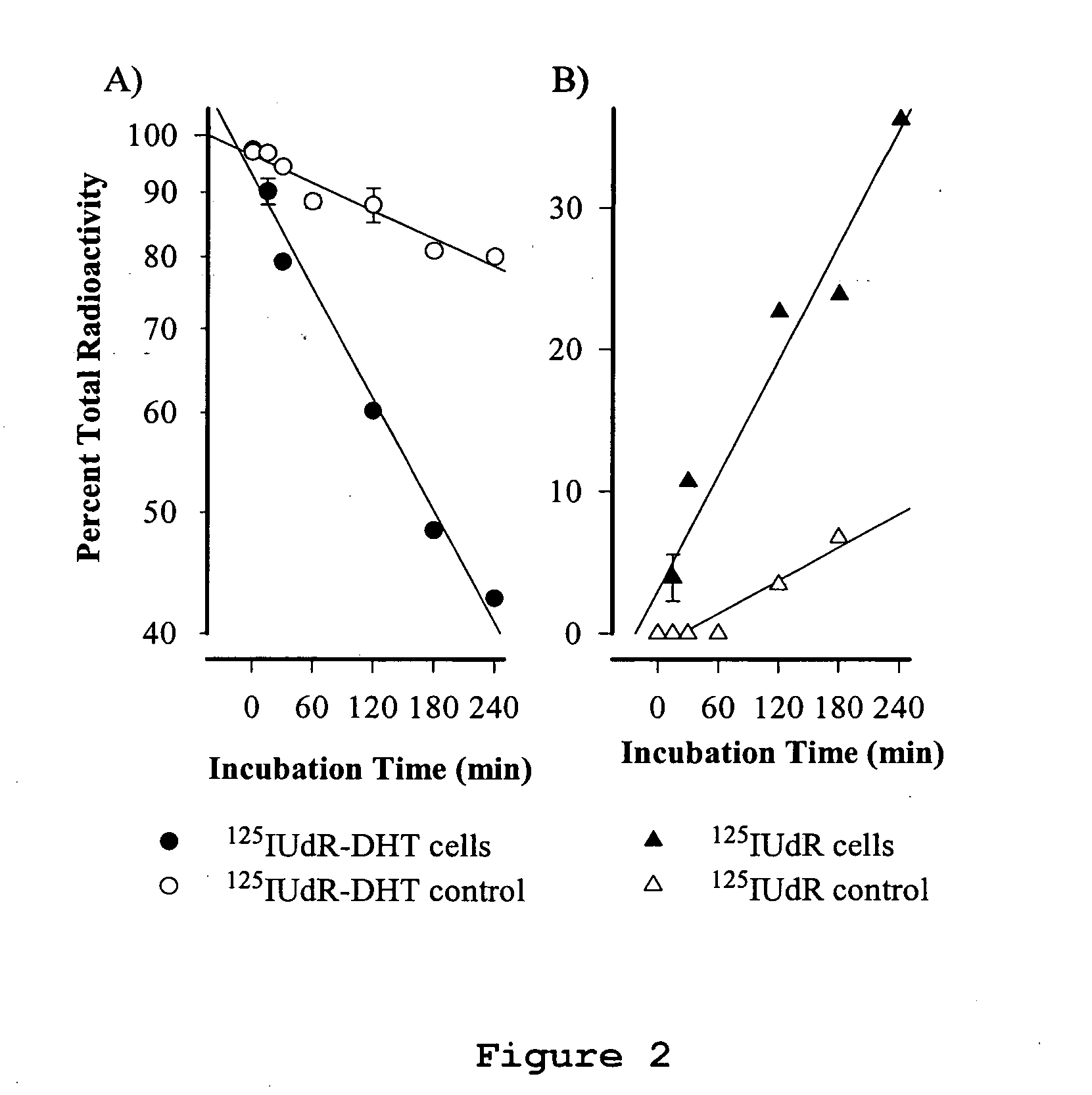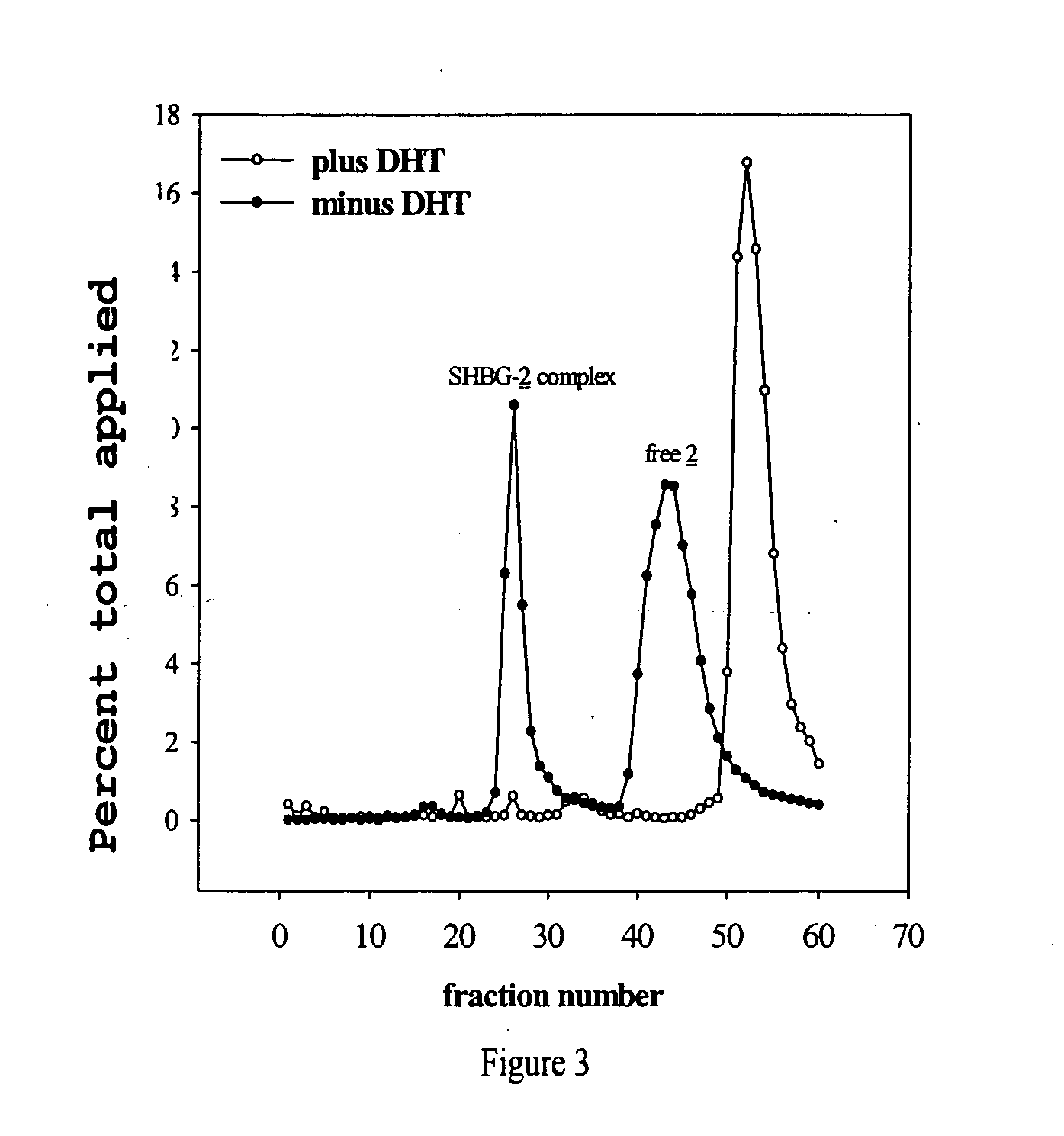Cancer specific radiolabeled conjugates regulated by the cell cycle for the treatment and diagnosis of cancer
a cell cycle and conjugate technology, applied in the field of targeted therapy and medical imaging, can solve the problems of antibody itself not being able to reach the cell nucleus in effective amounts, the ability of antibodies to improve the response, and the toxicity of viable cells, so as to limit the exposure of normal tissue to radiation and achieve rapid pharmacokinetics
- Summary
- Abstract
- Description
- Claims
- Application Information
AI Technical Summary
Benefits of technology
Problems solved by technology
Method used
Image
Examples
example i
Synthesis of 125IUdR-3′-succinyl-DHT Conjugate (Scheme 1)
A. Preparation of DHT Half Ester of Succinic Acid
Succinic acid anhydride (2 g, 20 mmol) and DHT (2 g, 6.9 mmol) were dissolved in anhydrous pyridine and 80 mg of 4-dimethylaminopyridine (DMAP) was added. The reaction flask was placed on a rotatory evaporator and approximately 20 mL of pyridine was evaporated under reduced pressure at 50° C. The reaction mixture was then stirred for 1 h at room temperature and ice-water was added (50 mL). The mixture was extracted with ethyl acetate (2×50 mL), washed with 5% citric acid, water and brine. The ethyl acetate layer was dried over anhydrous MgSO4. The solvent was evaporated to dryness and an oily residue was treated with ethyl acetate / hexanes mixture to produce white precipitate of the crude DHT half-ester of succinic acid. The end product was collected by filtration and dried in vacuo. The purification of the DHT half-ester of succinic acid was accomplished on a silica gel colu...
example ii
Synthesis of 5′-monophosphate-125IUdR-3′-succinyl-DHT Conjugate (Schemes 2 and 3)
A. Phosphorylation Reaction
IUdR (1.5 g, 4.25 mmol) was dissolved in 7 mL of DMF / THF mixture (3:4; v / v) under strictly anhydrous conditions. After cooling to 0° C., 1H-tetrazole (1.2 g, 17.1 mmol) and di-tert-butyl diisopropylphosphoramidite (1.65 mL, 5.1 mmol) were added. The mixture was stirred at 0-4° C. for 72 h. Tert-Butyl hydroperoxide (4.6 mL) was added at −80° C. and the mixture was allowed to slowly warm up to room temperature. A 5% solution of NaHSO3 (10 mL) was added and the whole mixture was evaporated to dryness. The residue was extracted with dichloromethane (2×50 mL) and the organic layer dried with MgSO4. A mixture of all possible phosphorylated derivatives of IUdR was obtained, i.e., 3′-monosubstituted, 5′-monosubstituted and 3′,5′-disubstituted. Separation of the desired 5′-isomer was accomplished on a silica gel column with chloroform / methanol (10:0.6; v / v) as a solvent. The desire...
example iii
Synthesis of 5′-[125I]iodo-2′-deoxy-5′-monophosphate-O-methyl-O-(mono-dihydrotestosterone) (Scheme 4)
A. Preparation of N,N-diisopropylmethylphoshoramidate of DHT
Dihydrotestosterone (5α-androstan-17β-ol-3′-one; 2 g, 6.9 mmol) was dissolved in 30 mL of anhydrous THF under nitrogen. N,N-Diisopropylethylamine (DEPA; 1.78 g, 13.8 mmol) and DMAP (20 mg, 0.13 mmol) were added. A stirred mixture was cooled to 0° C. and N,N-diisopropylmethylphosphoamidic chloride (2.05 g, 10.33 mmol) was added neat in five 0.5-mL portions. Stirring was continued at 0° C. for 30 min. The precipitate was filtered off and the filtrate was evaporated to dryness under vacuum. A crude product was purified on a silica gel column using dichloromethane / ethyl acetate / triethylamine (10 / 10 / 0.05; v / v) as a solvent. Only partial purification was achieved and the material obtained from the column was used in the following step of the synthesis.
B. Preparation of 5-Iodo-2′Deoxyuridine-5′-Monomethylphosphate-3′-Succinyl...
PUM
| Property | Measurement | Unit |
|---|---|---|
| multidrug resistance | aaaaa | aaaaa |
| radioactivity | aaaaa | aaaaa |
Abstract
Description
Claims
Application Information
 Login to View More
Login to View More - R&D
- Intellectual Property
- Life Sciences
- Materials
- Tech Scout
- Unparalleled Data Quality
- Higher Quality Content
- 60% Fewer Hallucinations
Browse by: Latest US Patents, China's latest patents, Technical Efficacy Thesaurus, Application Domain, Technology Topic, Popular Technical Reports.
© 2025 PatSnap. All rights reserved.Legal|Privacy policy|Modern Slavery Act Transparency Statement|Sitemap|About US| Contact US: help@patsnap.com



